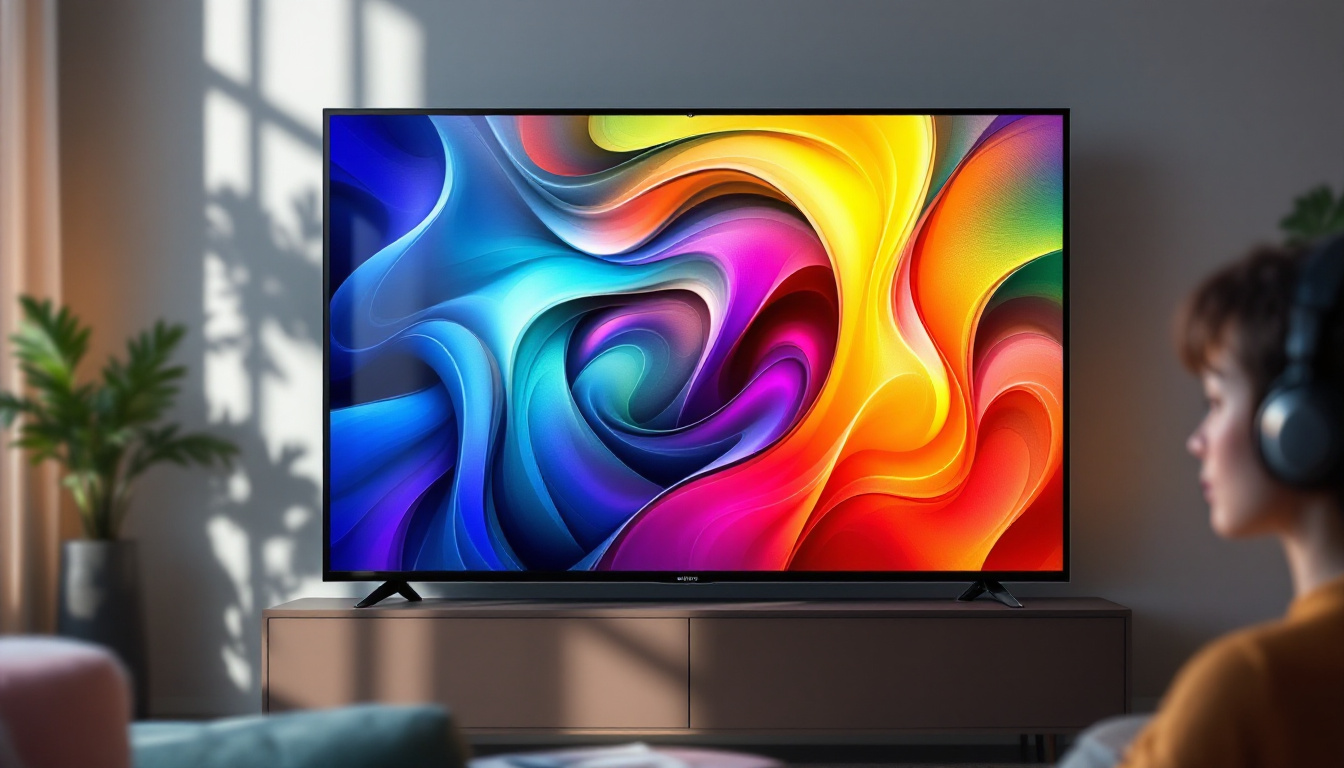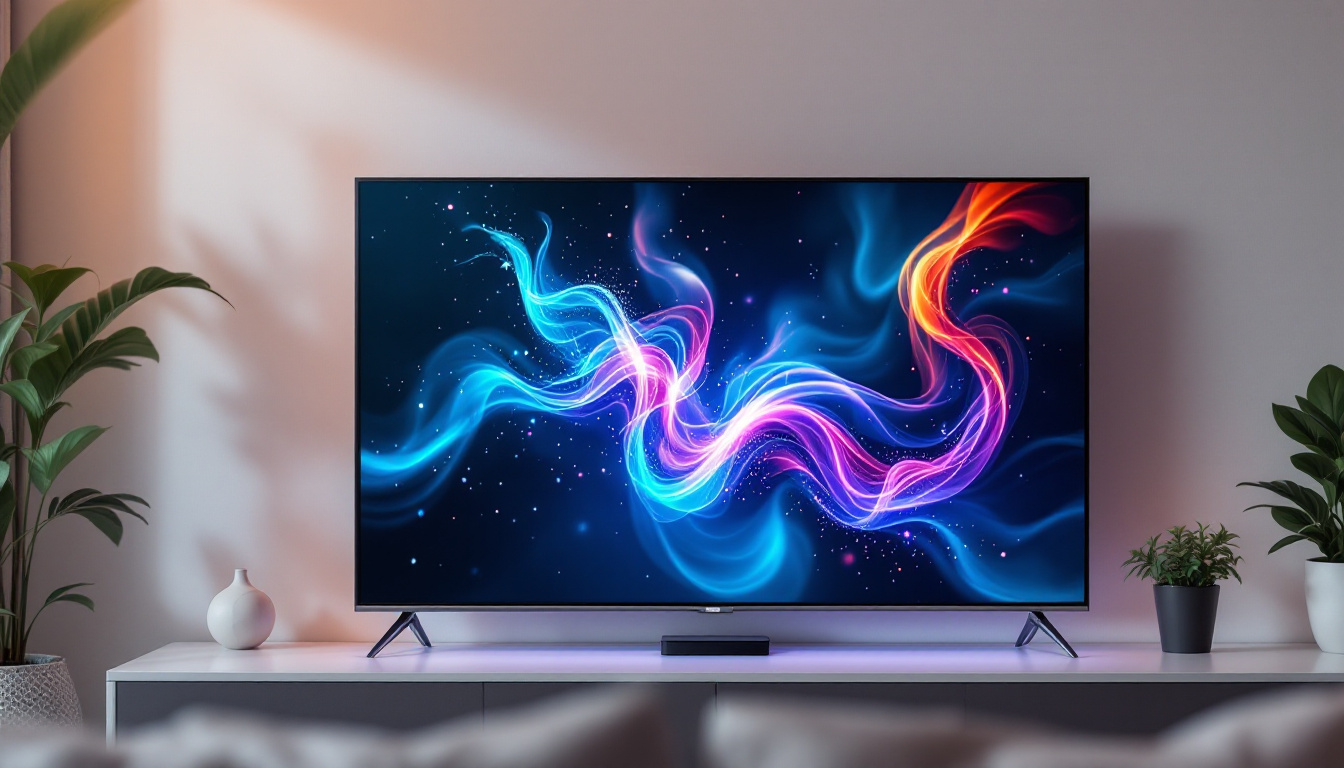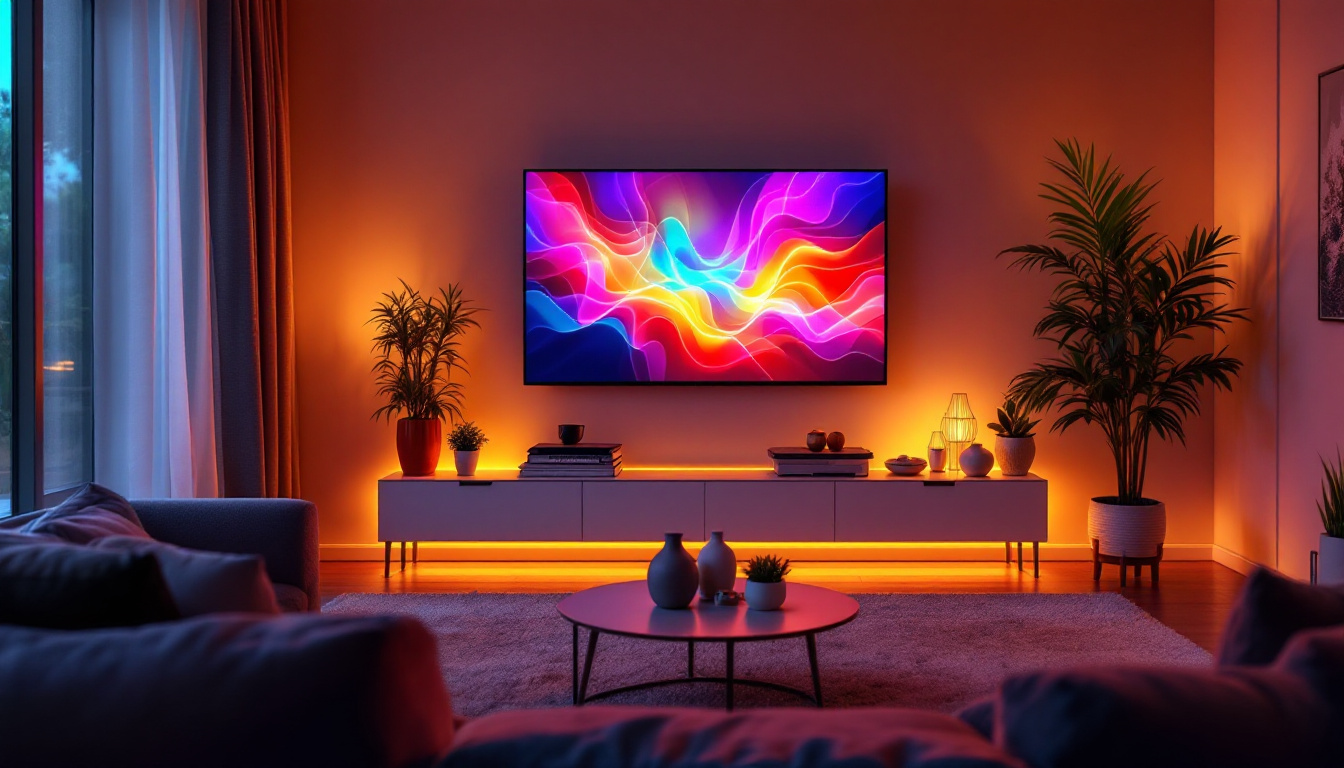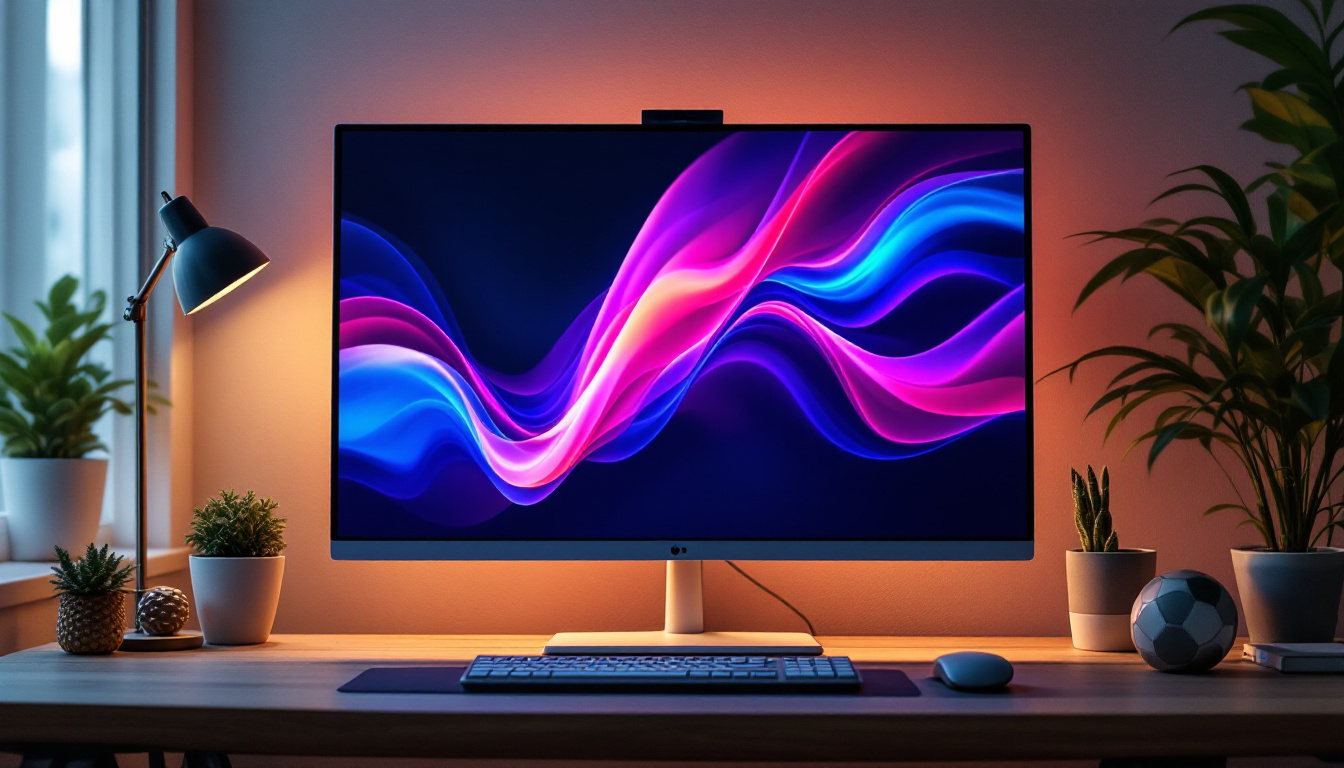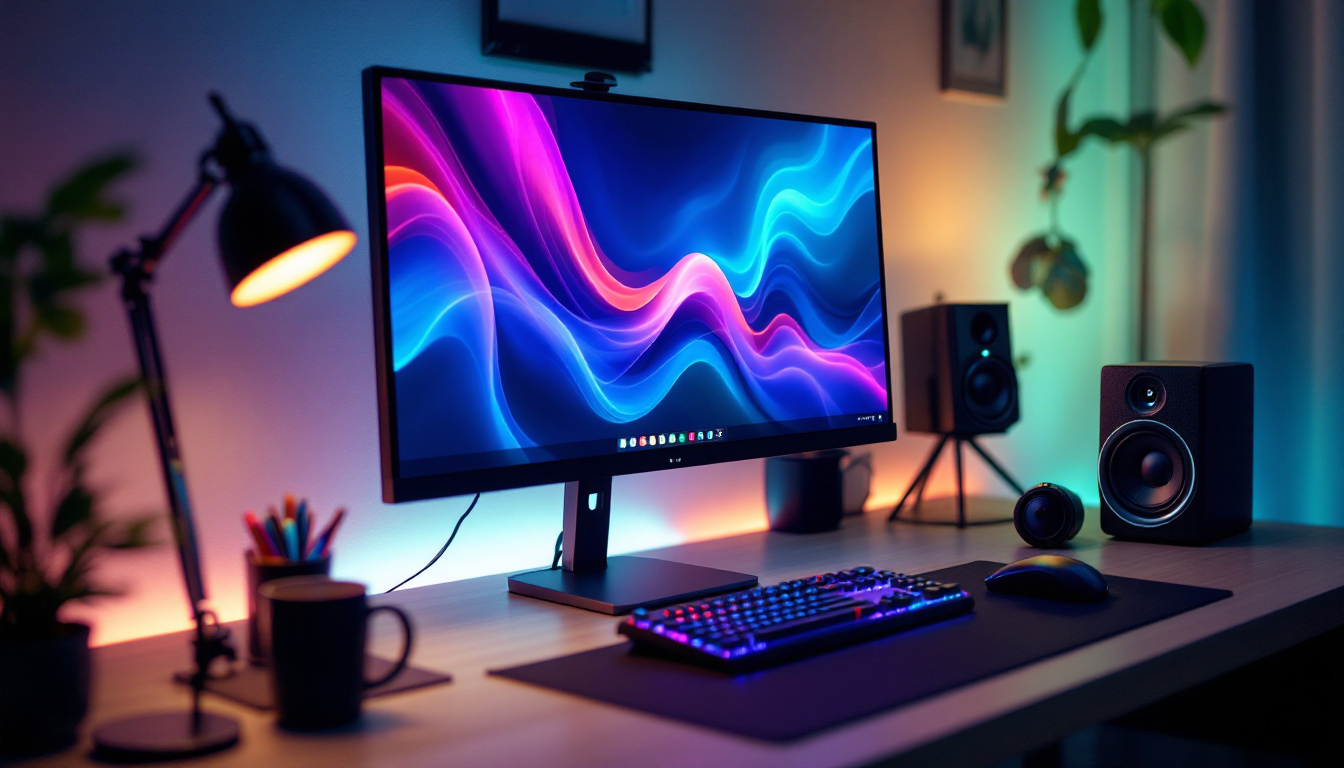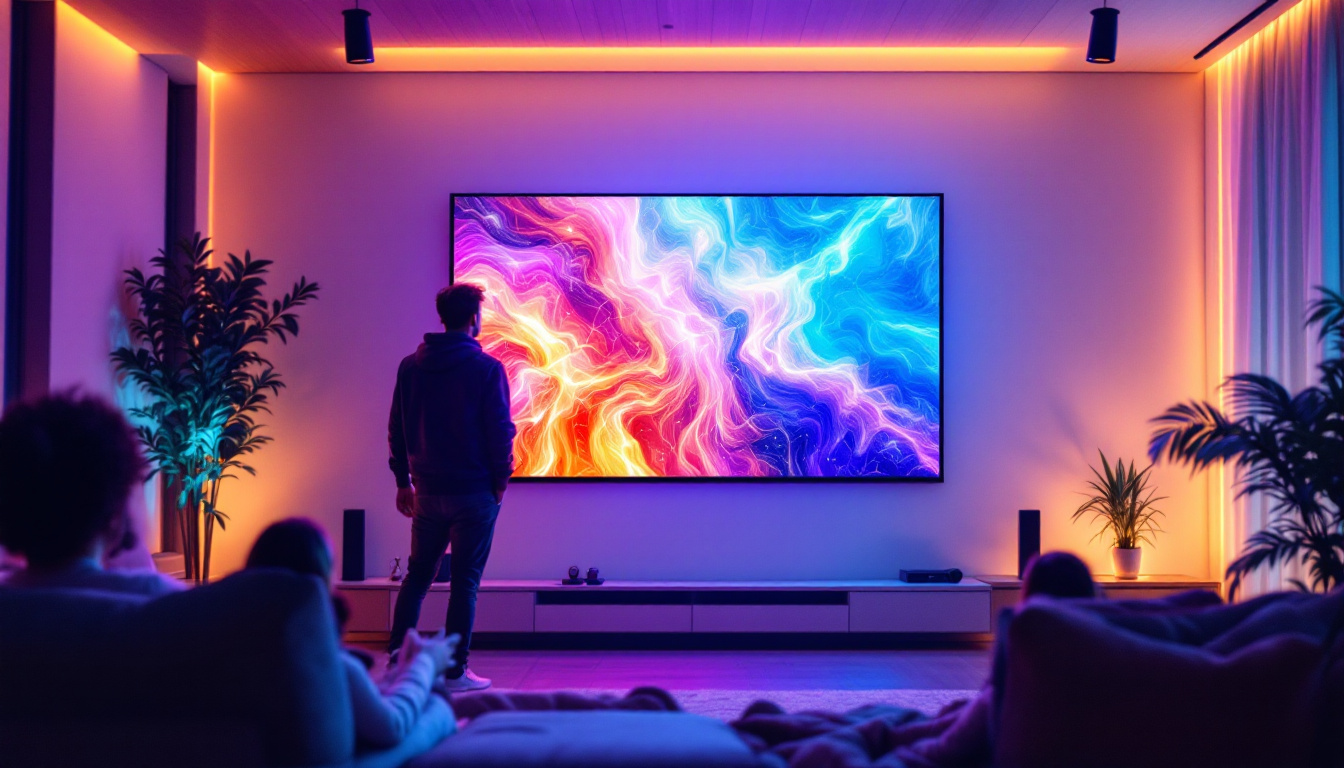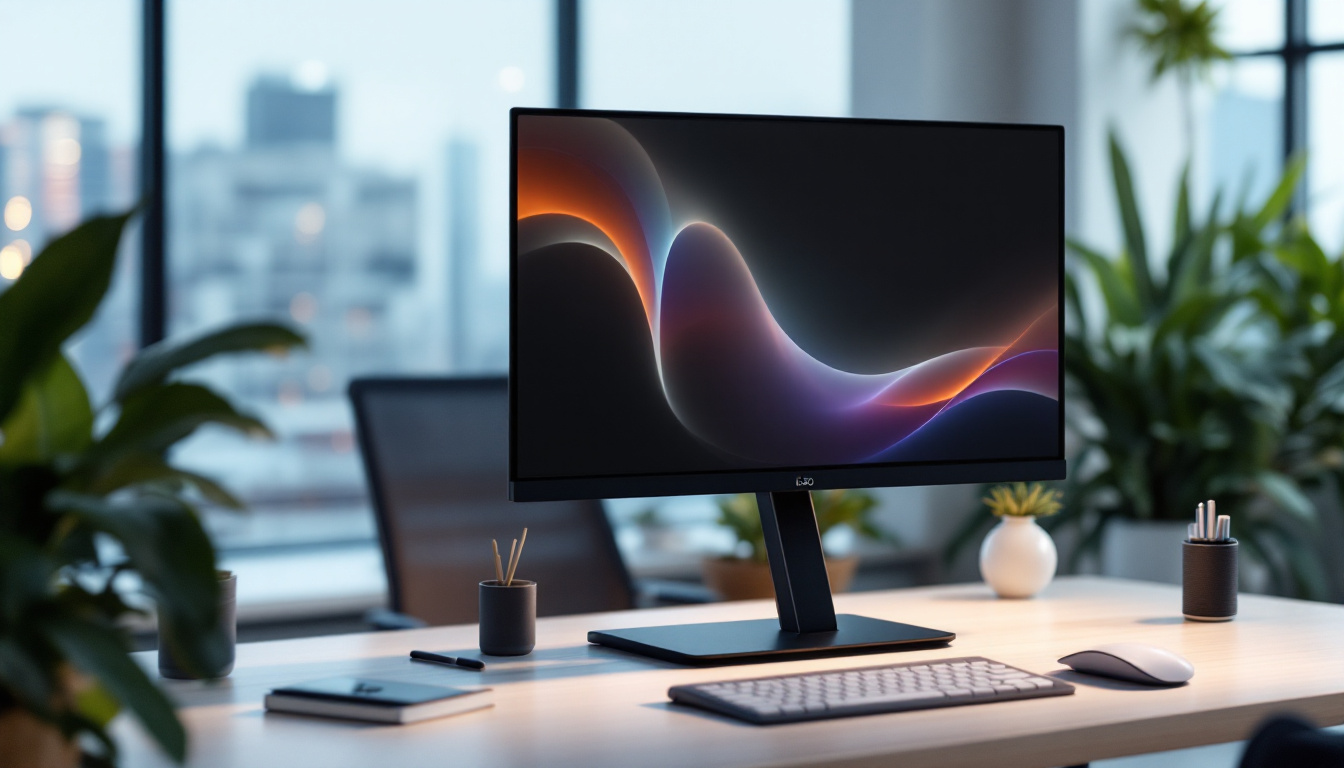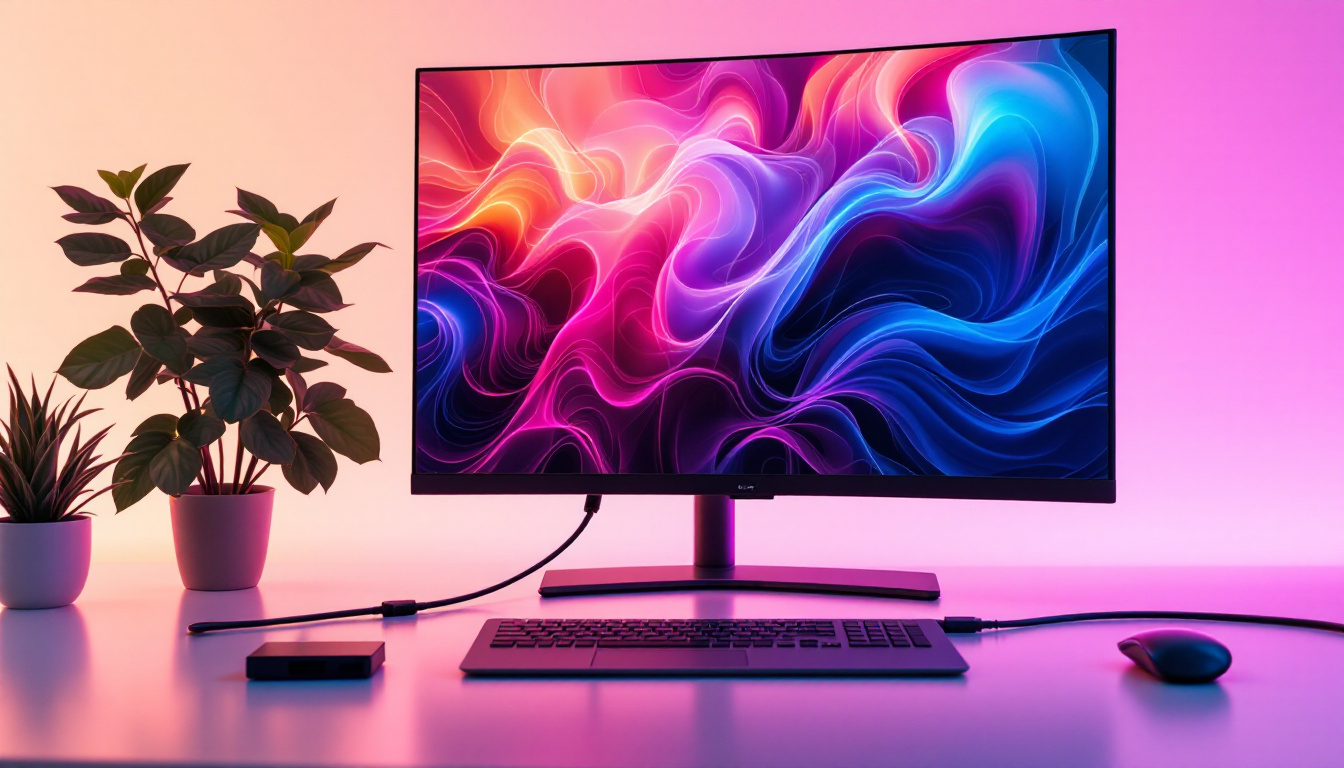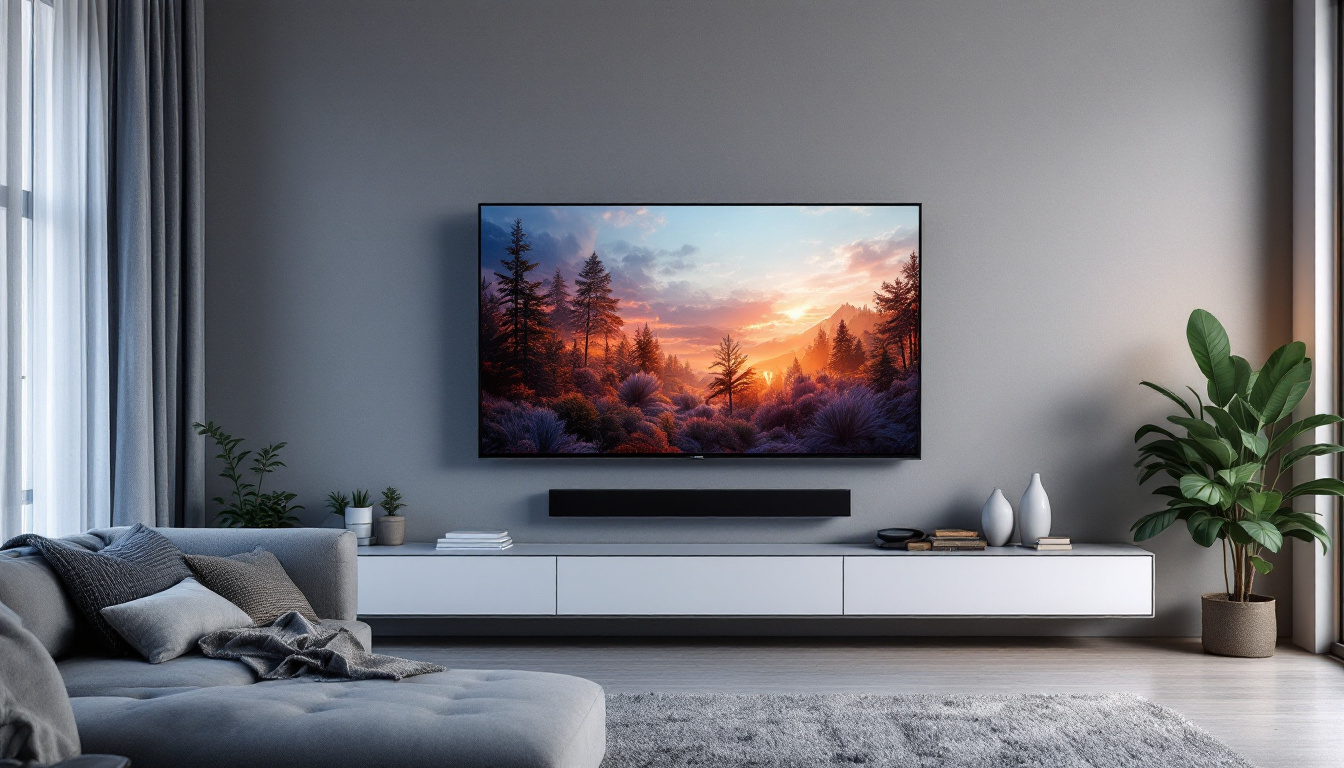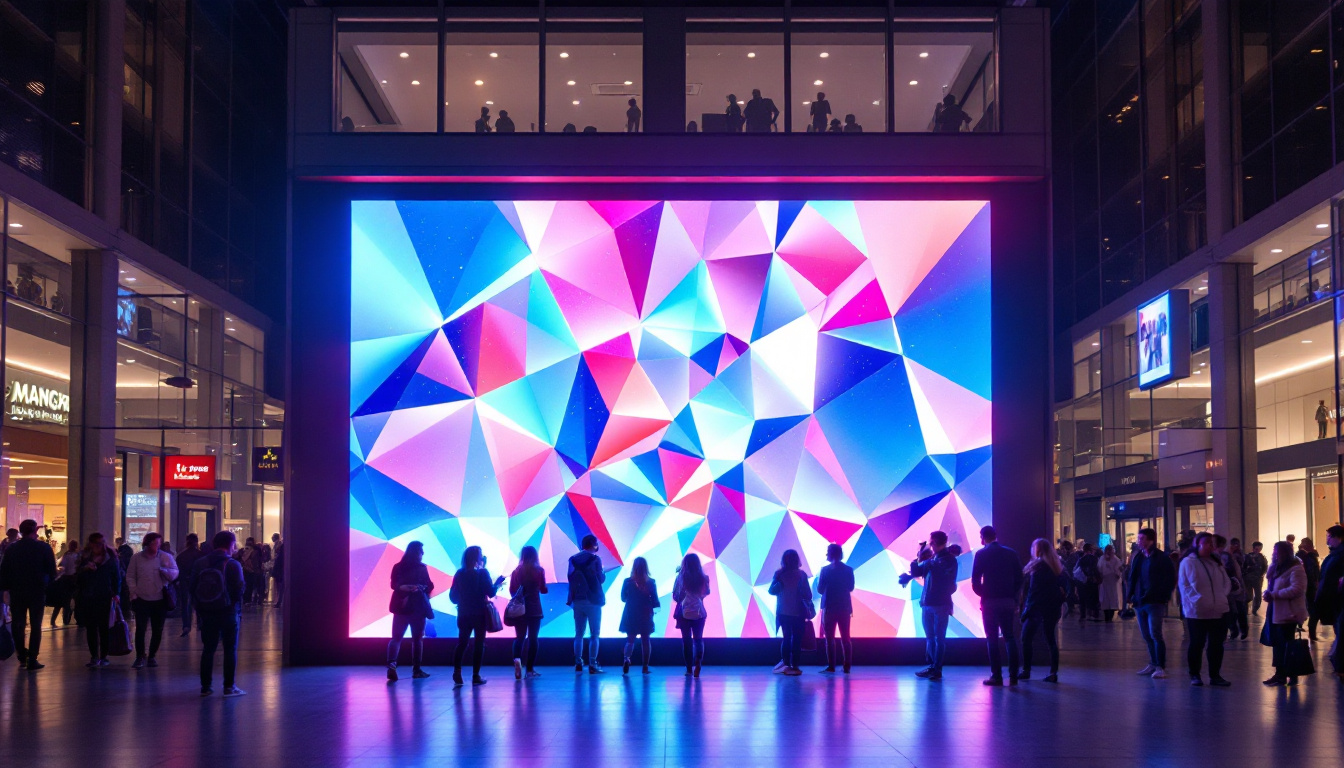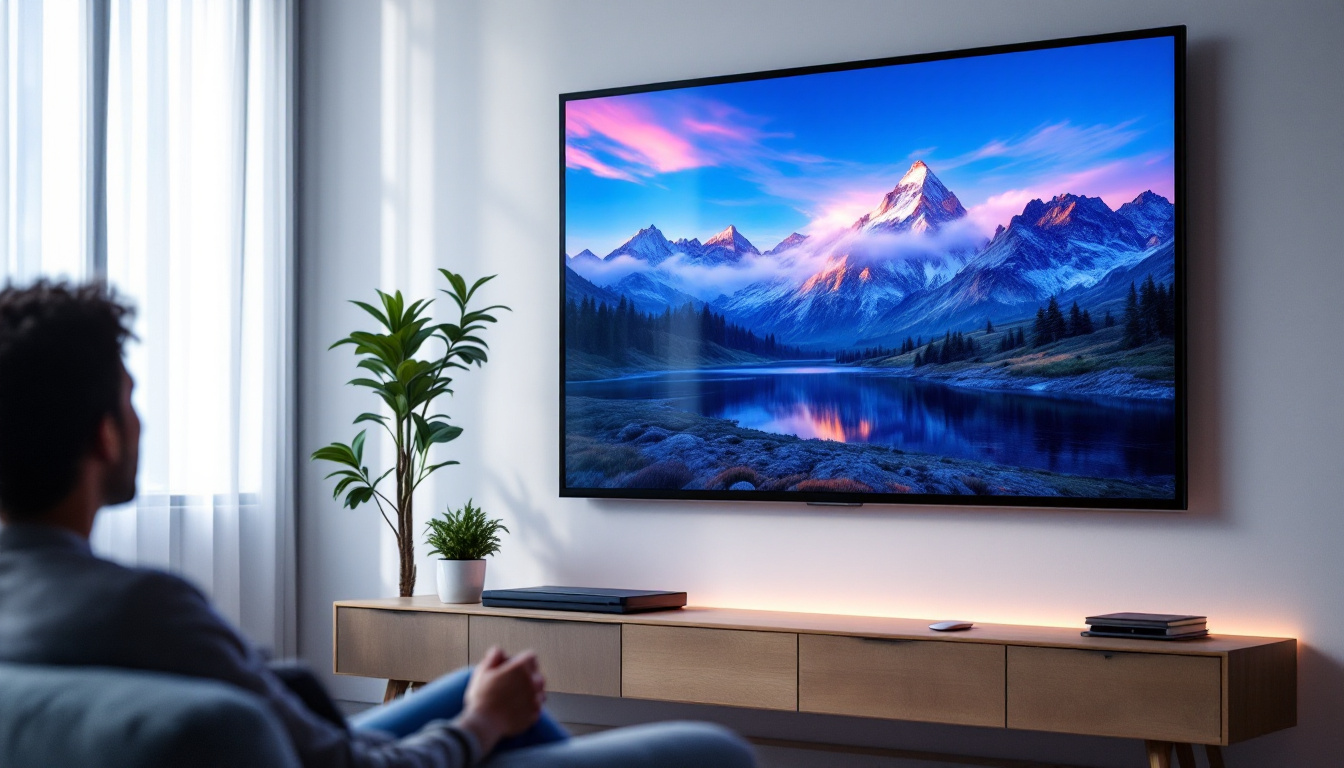In today’s digital age, the television has become a central piece of technology in many households. Among the various types of televisions available, LED flat panel TVs have gained immense popularity due to their sleek design and superior picture quality. This article delves into the intricacies of LED displays, exploring how they work, their advantages, and what to consider when purchasing one.
Understanding LED Technology
LED stands for Light Emitting Diode, a technology that has revolutionized the way we view images on screens. Unlike traditional LCD TVs that use fluorescent backlighting, LED TVs utilize a series of tiny diodes to produce light, resulting in brighter images and deeper contrasts. This advancement not only enhances the viewing experience but also contributes to energy efficiency, making LED technology a popular choice among environmentally conscious consumers.
How LED Displays Work
At the core of an LED flat panel TV is a liquid crystal display (LCD) panel. The LED technology enhances this panel by providing backlighting through an array of LEDs. These diodes can be arranged in different configurations, such as edge-lit or full-array, each offering unique benefits in terms of brightness and color accuracy. The ability of LEDs to turn on and off rapidly also allows for dynamic picture adjustments, which can improve motion clarity during fast-paced scenes, making them ideal for sports and action films.
In edge-lit models, LEDs are placed along the edges of the screen, allowing for a thinner design. Full-array models, on the other hand, have LEDs distributed across the entire back of the panel, enabling more precise local dimming and improved contrast ratios. This means that dark scenes can appear deeper and more detailed, while bright scenes can shine with greater intensity. Additionally, advancements in technology have led to features like HDR (High Dynamic Range), which further enhances the range of colors and brightness levels, providing a more lifelike viewing experience.
Types of LED Displays
LED displays can be categorized into several types, each designed to cater to different viewing preferences and environments. The main types include:
- Edge-Lit LED: These TVs are slim and lightweight, making them ideal for wall mounting. However, they may not offer the same level of contrast as full-array models. The design also allows for a sleek aesthetic that fits well in modern living spaces.
- Full-Array LED: With a more robust backlighting system, these TVs provide superior picture quality and are better suited for dark room viewing. They are particularly favored by cinephiles who appreciate the nuances of shadow and light in films.
- OLED: Although technically not an LED TV, OLED (Organic Light Emitting Diode) technology uses organic compounds that emit light when an electric current is applied. This results in exceptional color accuracy and contrast. OLED displays are known for their ability to achieve true blacks, as individual pixels can be turned off completely, creating an unparalleled depth in images.
In addition to these types, there are also variations like QLED (Quantum Dot LED), which utilizes quantum dot technology to enhance color reproduction and brightness. This type of display is particularly popular among gamers and those who enjoy vibrant visuals, as it can produce a wider color gamut and improved brightness levels. As technology continues to evolve, consumers can expect even more innovations in LED displays, further enhancing their viewing experiences across various media formats.
Advantages of LED Flat Panel TVs
LED flat panel TVs come with a plethora of benefits that make them a popular choice among consumers. Understanding these advantages can help in making an informed purchasing decision.
Picture Quality
One of the most significant advantages of LED TVs is their superior picture quality. The use of LEDs allows for brighter images and a wider color gamut, enhancing the viewing experience. Additionally, the ability to achieve deeper blacks through local dimming improves overall contrast, making images appear more lifelike. This enhanced picture quality is particularly noticeable in high-definition content, where the clarity and vibrancy of colors can transform a simple movie night into an immersive cinematic experience. Furthermore, many LED TVs now support advanced technologies such as HDR (High Dynamic Range), which further elevates the visual experience by providing a greater range of brightness and color detail.
Energy Efficiency
LED TVs are generally more energy-efficient compared to their LCD and plasma counterparts. The reduced power consumption not only lowers electricity bills but also contributes to a smaller carbon footprint. This makes LED TVs an environmentally friendly option for consumers who are conscious about energy use. Moreover, many manufacturers are now focusing on sustainable practices, using recyclable materials in their products and packaging. This commitment to sustainability resonates with eco-conscious consumers, making LED TVs not just a smart choice for entertainment, but also for the planet.
Thin and Lightweight Design
The design of LED flat panel TVs is another appealing feature. With their slim profiles and lightweight construction, these TVs can easily be mounted on walls or placed on stands without taking up much space. This aesthetic appeal is particularly attractive in modern home décor. Additionally, the sleek design often incorporates minimal bezels, maximizing the screen size and providing a more immersive viewing experience. The versatility of LED TVs allows them to blend seamlessly into various room styles, whether it’s a contemporary living room or a cozy bedroom, making them a stylish addition to any home.
Furthermore, many LED flat panel TVs come equipped with smart features, allowing users to access streaming services, browse the internet, and connect with other smart devices. This integration of technology not only enhances functionality but also provides convenience, as viewers can enjoy their favorite shows and movies without the need for additional devices. The user-friendly interfaces and remote controls make navigation a breeze, ensuring that even those who are less tech-savvy can fully enjoy the benefits of their new television.
Considerations When Buying an LED Flat Panel TV
While LED flat panel TVs offer numerous advantages, several factors should be considered before making a purchase. Understanding these aspects can help ensure that the chosen model meets specific needs and preferences.
Screen Size
Screen size is a crucial factor when selecting an LED TV. The ideal size depends on the viewing distance and the layout of the room. A general rule of thumb is that the viewing distance should be approximately 1.5 to 2.5 times the diagonal size of the screen. For instance, a 55-inch TV is best viewed from a distance of about 6.5 to 11.5 feet.
Resolution
Resolution significantly impacts picture quality, and consumers should consider whether they want a Full HD (1080p), 4K Ultra HD (2160p), or even 8K resolution TV. While Full HD is still common, 4K TVs are becoming increasingly popular due to their higher pixel density, providing sharper images and more detail, especially on larger screens.
Smart Features
Modern LED flat panel TVs often come equipped with smart features, allowing users to access streaming services, browse the internet, and use various applications. When choosing a TV, it’s essential to consider the operating system and the compatibility of apps. Popular platforms include Android TV, Roku, and Tizen, each offering unique interfaces and functionalities.
Comparing LED TVs to Other Technologies
To fully appreciate the advantages of LED flat panel TVs, it is beneficial to compare them with other television technologies such as OLED and QLED.
LED vs. OLED
While LED TVs utilize a backlighting system, OLED TVs emit light on their own, allowing for individual pixel control. This results in superior contrast ratios and color accuracy. However, OLEDs can be more expensive and may suffer from burn-in issues if static images are displayed for extended periods.
LED vs. QLED
QLED, or Quantum Dot LED, is a technology developed by certain manufacturers that enhances LED TVs by using quantum dots to improve color accuracy and brightness. While QLED TVs can achieve impressive brightness levels, they still rely on a backlighting system, which may not provide the same level of contrast as OLED.
Maintenance and Care for LED Flat Panel TVs
Proper maintenance can extend the lifespan and performance of an LED flat panel TV. Here are some tips for keeping it in optimal condition.
Cleaning the Screen
Regular cleaning of the screen is essential to maintain picture quality. It is advisable to use a microfiber cloth and a gentle cleaning solution specifically designed for electronics. Avoid using paper towels or abrasive materials, as they can scratch the surface.
Managing Brightness Settings
Adjusting the brightness settings according to the room’s lighting can enhance viewing comfort and reduce eye strain. Many LED TVs come with preset modes for different environments, such as “Cinema” or “Game,” which can optimize performance based on the content being viewed.
The Future of LED Technology
The evolution of LED technology continues to advance, with manufacturers constantly innovating to enhance performance and features. The future of LED flat panel TVs looks promising, with developments in areas such as:
Improved Energy Efficiency
As technology progresses, LED TVs are becoming even more energy-efficient. This not only benefits consumers through lower energy bills but also contributes to environmental sustainability. Future models may incorporate advanced materials and designs that further reduce power consumption.
Enhanced Picture Quality
Future LED TVs are expected to offer even better picture quality, with advancements in color accuracy, contrast ratios, and brightness levels. Technologies such as mini-LED and micro-LED are emerging, promising to deliver superior performance that rivals OLED displays.
Integration with Smart Home Systems
The integration of LED TVs with smart home systems is becoming increasingly common. Future models may offer enhanced connectivity options, allowing users to control their TVs through voice commands or integrate them seamlessly with other smart devices in their homes.
Conclusion
LED flat panel TVs have transformed the way viewers experience entertainment, offering stunning visuals, energy efficiency, and sleek designs. Understanding the technology behind LED displays, their advantages, and what to consider when purchasing can help consumers make informed decisions. As technology continues to evolve, LED TVs will likely remain at the forefront of home entertainment, providing viewers with an immersive and enjoyable experience.
Discover the Future of Visual Entertainment with LumenMatrix
Ready to elevate your viewing experience with the latest in LED display technology? Look no further than LumenMatrix, a pioneer in creating dynamic and vibrant visual solutions. From the comfort of your living room to the excitement of an outdoor event, our comprehensive range of LED display modules, including Indoor and Outdoor LED Wall Displays, Vehicle LED Displays, and more, are designed to bring your content to life. Embrace the future of digital storytelling and make a lasting impression with our cutting-edge displays. Check out LumenMatrix LED Display Solutions today and transform the way you share your message with the world.

